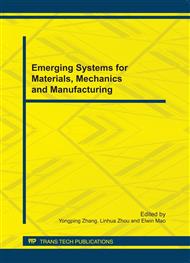p.661
p.666
p.671
p.676
p.681
p.685
p.690
p.695
p.699
A New Formant Detection Algorithm Based on Cepstrum
Abstract:
Formant frequency is one of important parameters for speech signal. This paper presents a new formant detection algorithm based on cepstrum. Firstly, the traditional speech formant method is discussed. To overcome the weakness of traditional method, an extraction method based on formant enhancement is described. Then, the first-order derivative of phase-frequency characteristics has better frequency resolution than logarithmic amplitude-frequency characteristics, so the first-order derivative of phase-frequency characteristics based on formant enhancement is proposed. Finally, the experimental results show that formants parameters can be extract more precisely.
Info:
Periodical:
Pages:
681-684
Citation:
Online since:
October 2011
Authors:
Price:
Сopyright:
© 2012 Trans Tech Publications Ltd. All Rights Reserved
Share:
Citation:


